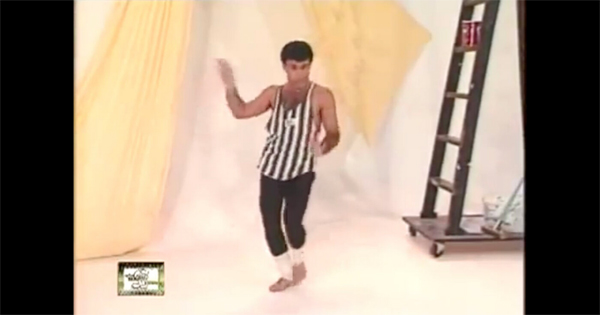KUNSTHALLE ZÜRICH

At 7 pm, Ramin Haerizadeh, Rokni Haerizadeh and Hesam Rahmanian talk about their film Dance after the Revolution, from Tehran to L.A. and back and Take a poiesis capsule with a glass of shadow on an empty stomach, their new exhibition at NYU Abu Dhabi.
From 6 April–20 May we are showing the films Bondy from the French collective (LA)HORDE and Dance after the Revolution, from Tehran to L.A., and back from the Dubai-based Iranian artists Ramin Haerizadeh, Rokni Haerizadeh and Hesam Rahmanian. In recent years dance has been central in our interests, evident in the exhibitions from Isabel Lewis and Trajal Harrell, for example. This programmatic theme continues with this six-week long exhibition. While Bondy and Dance after the Revolution, from Tehran to L.A. and back are two very different films, they both demonstrate how dance can bring together communities.
Dance after the Revolution, from Tehran to L.A., and back is a film by Dubai-based Iranian artists Ramin Haerizadeh, Rokni Haerizadeh and Hesam Rahmanian. The film traces an extraordinary story that can goes, in a very abbreviated form, as follows: due to the Islamic revolution of 1978/79, the dancer, choreographer and entertainer Mohammad Khordadian leaves his country of Iran and settles in Los Angeles. There he earns his living by dancing for the Iranian community in exile. At the same time, he produces videos in which he demonstrates how Persian-Arabic folk dance, influenced by cabaret, can be combined with Jane Fonda's aerobics. These instructional videos are smuggled back to Iran hidden on VHS tapes, go viral and are passed on, copied countless times, from hand to hand. Khordadian's dance becomes the most popular folk dance in Iran – where dancing in public is strictly forbidden and punishable by law to this day. Today, everyone knows his dance, as the film shows at the end using numerous YouTube clips. In 2006, Khordadian, who lives in Istanbul, came out as homosexual in a television interview. Khordadian, known as the ‘King of Dance’, often incorporates humour in his dance and bends gender roles by inspiring men to perform movements traditionally reserved for women. 'Let's dance up a storm like Khordadian!'
More information here